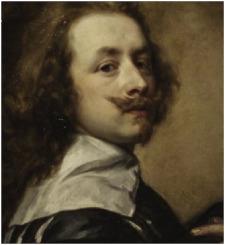Dyes and Pigments ( IF 4.5 ) Pub Date : 2020-11-11 , DOI: 10.1016/j.dyepig.2020.109000 Patrick Commins , Veronica Lee , Tamas Panda , Alain Lesimple , Liang Li , Panče Naumov

|
The artist Sir Anthony van Dyck spent his life illustrating the English royalty in the early to mid-17th century, and during his career he became famous for his relaxed elegance and use of a particular hue of brown. The brown pigment would eventually be named after him, ‘van Dyck brown’, and can still be found today. However, another pigment became commercially available much later after his death, and it is commercially available as ‘van Dyck crystals’. In practice the two terms are used interchangeably, as they both are made from organic material. Here we investigate the complex chemical composition of ‘van Dyck crystals’, and we show that the two pigments are distinctly different, both in composition and in origin. We show that the colored component of the ‘van Dyck crystals’ is not crystalline and should not be confused with the original pigment.
中文翻译:

范戴克“水晶”的本性
艺术家安东尼·范戴克爵士度过了他一生中说明的初期至中期17英国皇室日世纪,在他的职业生涯中,他以轻松的优雅和使用特定的棕色调而闻名。棕色颜料最终将以他的名字命名为“ van Dyck brown”,今天仍然可以找到。但是,另一种颜料在他去世后不久就可以从市场上买到,并且可以作为“范戴克晶体”在市场上买到。实际上,这两个术语可以互换使用,因为它们都是由有机材料制成的。在这里,我们研究了“范戴克晶体”的复杂化学成分,并且我们发现两种颜料在成分和来源方面都明显不同。我们表明,“范戴克晶体”的有色成分不是结晶的,不应与原始颜料混淆。


























 京公网安备 11010802027423号
京公网安备 11010802027423号